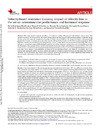Identificador persistente para citar o vincular este elemento:
https://accedacris.ulpgc.es/jspui/handle/10553/77402
| Campo DC | Valor | idioma |
|---|---|---|
| dc.contributor.author | Rodríguez Rosell, David | en_US |
| dc.contributor.author | Yáñez-García, Juan Manuel | en_US |
| dc.contributor.author | Mora-Custodio, Ricardo | en_US |
| dc.contributor.author | Pareja-Blanco, Fernando | en_US |
| dc.contributor.author | Ravelo García, Antonio Gabriel | en_US |
| dc.contributor.author | Ribas-Serna, Juan | en_US |
| dc.contributor.author | González-Badillo, Juan José | en_US |
| dc.date.accessioned | 2021-02-01T08:53:57Z | - |
| dc.date.available | 2021-02-01T08:53:57Z | - |
| dc.date.issued | 2020 | en_US |
| dc.identifier.issn | 1715-5312 | en_US |
| dc.identifier.uri | https://accedacris.ulpgc.es/handle/10553/77402 | - |
| dc.description.abstract | This study aimed to compare the effects of 2 resistance training (RT) programs with different velocity losses (VLs) allowed in each set: 10% (VL10%) versus 30% (VL30%) on neuromuscular performance and hormonal response. Twenty-five young healthy males were randomly assigned into 2 groups: VL10% (n = 12) or VL30% (n = 13). Subjects followed a velocity-based RT program for 8 weeks (2 sessions per week) using only the full-squat (SQ) exercise at 70%–85% 1-repetition maximum (1RM). Repetition velocity was recorded in all training sessions. A 20-m running sprint, countermovement jump (CMJ), 1RM, muscle endurance, and electromyogram (EMG) during SQ exercise and resting hormonal concentrations were assessed before and after the RT program. Both groups showed similar improvements in muscle strength and endurance variables (VL10%: 7.0%–74.8%; VL30%: 4.2%–73.2%). The VL10% resulted in greater percentage increments in CMJ (9.2% vs. 5.4%) and sprint performance (–1.5% vs. 0.4%) than VL30%, despite VL10% performing less than half of the repetitions than VL30% during RT. In addition, only VL10% showed slight increments in EMG variables, whereas no significant changes in resting hormonal concentrations were observed. Therefore, our results suggest that velocity losses in the set as low as 10% are enough to achieve significant improvements in neuromuscular performance, which means greater efficiency during RT. | en_US |
| dc.language | eng | en_US |
| dc.relation.ispartof | Applied Physiology, Nutrition and Metabolism | en_US |
| dc.source | Applied Physiology, Nutrition and Metabolism [ISSN 1715-5312], v. 45(8), p. 817 - 828 | en_US |
| dc.subject | 3307 Tecnología electrónica | en_US |
| dc.subject.other | Muscle adaptations | en_US |
| dc.subject.other | Physical performance | en_US |
| dc.subject.other | Resistance training | en_US |
| dc.subject.other | Full squat | en_US |
| dc.subject.other | EMG | en_US |
| dc.subject.other | Endocrine response | en_US |
| dc.title | Velocity-based resistance training: impact of velocity loss in the set on neuromuscular performance and hormonal response | en_US |
| dc.type | info:eu-repo/semantics/article | en_US |
| dc.type | Article | en_US |
| dc.identifier.doi | 10.1139/apnm-2019-0829 | en_US |
| dc.identifier.issue | 8 | - |
| dc.investigacion | Ciencias de la Salud | en_US |
| dc.type2 | Artículo | en_US |
| dc.utils.revision | Sí | en_US |
| dc.identifier.ulpgc | Sí | en_US |
| dc.contributor.buulpgc | BU-MED | en_US |
| dc.description.sjr | 0,789 | |
| dc.description.jcr | 2,665 | |
| dc.description.sjrq | Q2 | |
| dc.description.jcrq | Q3 | |
| dc.description.scie | SCIE | |
| item.fulltext | Con texto completo | - |
| item.grantfulltext | open | - |
| crisitem.author.dept | GIR IDeTIC: División de Procesado Digital de Señales | - |
| crisitem.author.dept | IU para el Desarrollo Tecnológico y la Innovación | - |
| crisitem.author.dept | Departamento de Señales y Comunicaciones | - |
| crisitem.author.orcid | 0000-0002-8512-965X | - |
| crisitem.author.parentorg | IU para el Desarrollo Tecnológico y la Innovación | - |
| crisitem.author.fullName | Ravelo García, Antonio Gabriel | - |
| Colección: | Artículos | |
Citas de WEB OF SCIENCETM
Citations
54
actualizado el 08-jun-2025
Visitas
186
actualizado el 08-jun-2024
Descargas
599
actualizado el 08-jun-2024
Google ScholarTM
Verifica
Altmetric
Comparte
Exporta metadatos
Los elementos en ULPGC accedaCRIS están protegidos por derechos de autor con todos los derechos reservados, a menos que se indique lo contrario.
